Barbara Kapusta

Empathic Creatures, 2018
HD Video
6:44 Min.
Courtesy Gianni Manhattan, Vienna
One central, recurring element in the work of Barbara Kapusta (*1983 Lilienfeld, lives in Vienna) is the intertwining of subjects under increasing pressure and especially of their bodies with the act of speaking. The synthetic quality of depicting bodies seems to produce a resonating space that brings language to the surface and thus seems to express a consciousness. By translating these bodies into digital space, on the one hand, and representing them as ceramic objects, on the other, the artist produces different spaces of reception that she brings together in her installations.
The video Emphatic Creatures (2018) shows a simulated landscape inhabited by four synthetic bodies whose optical qualities recall metal or latex surfaces. It conveys the impression of a bottomless expanse in which physical entities come together after every social system has broken down. The beings seem profoundly dependent on connection and exchange while at the same time looking frightened and struggling to develop a new form of community.
How do these beings live together? And how do they communicate? As much as the artist describes an image of brokenness and despair, she also speaks of tenderness, gentleness, and closeness. In the center stands the fragmented body, with its desires and limits, its sadness and brutality. The amorphous, not clear determinable material of such bodies becomes a logic of queer action that breaks up the conventional representations of corporeality and makes diversity and vulnerability the foundations of a new society. Kapusta thematizes in her work the fault lines of our physical presence and avoids depicting the body with its usual categorizations. The bodies described refuse to be identified as good or bad and instead evade any attempt to pin down their identity.
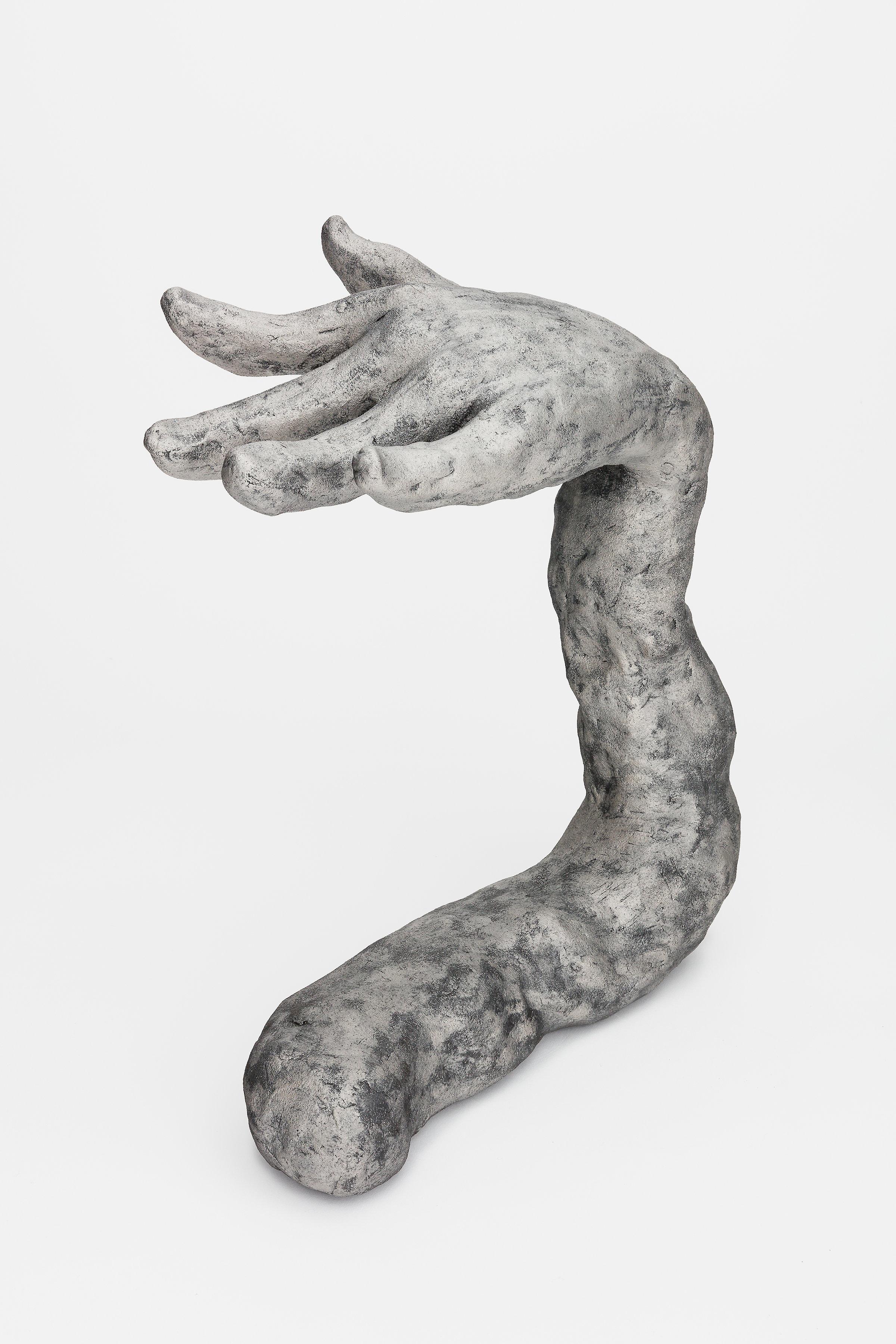
Absorbing Body, 2020
Brown clay, platinum luster
34 × 30.5 × 15 cm
Courtesy Gianni Manhattan, Vienna
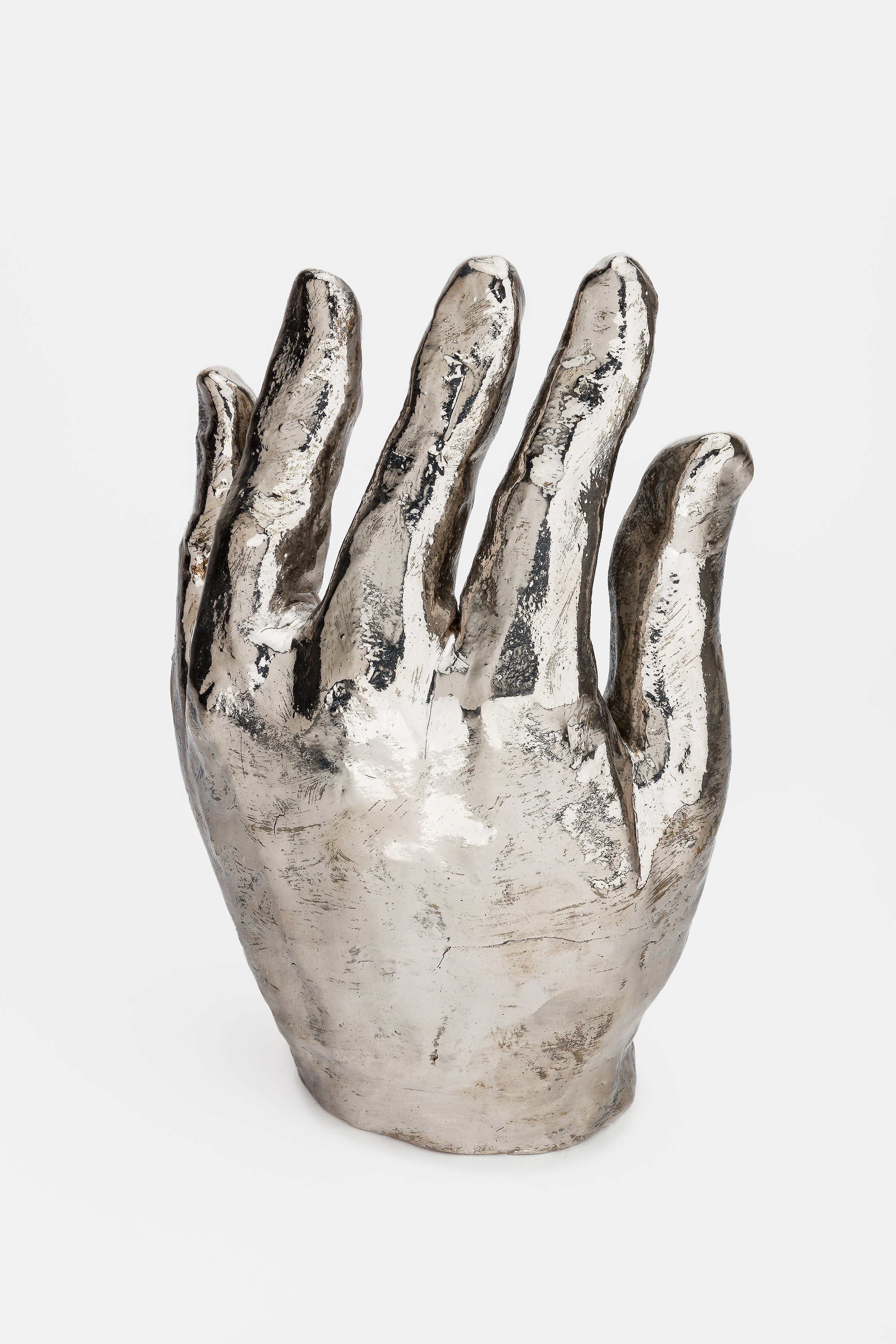
Anxiously Leaking, 2020
Porcelain, red iron oxide, transparent glaze, platinum luster
24.5 × 16.5 × 9.5 cm
Courtesy Gianni Manhattan, Vienna
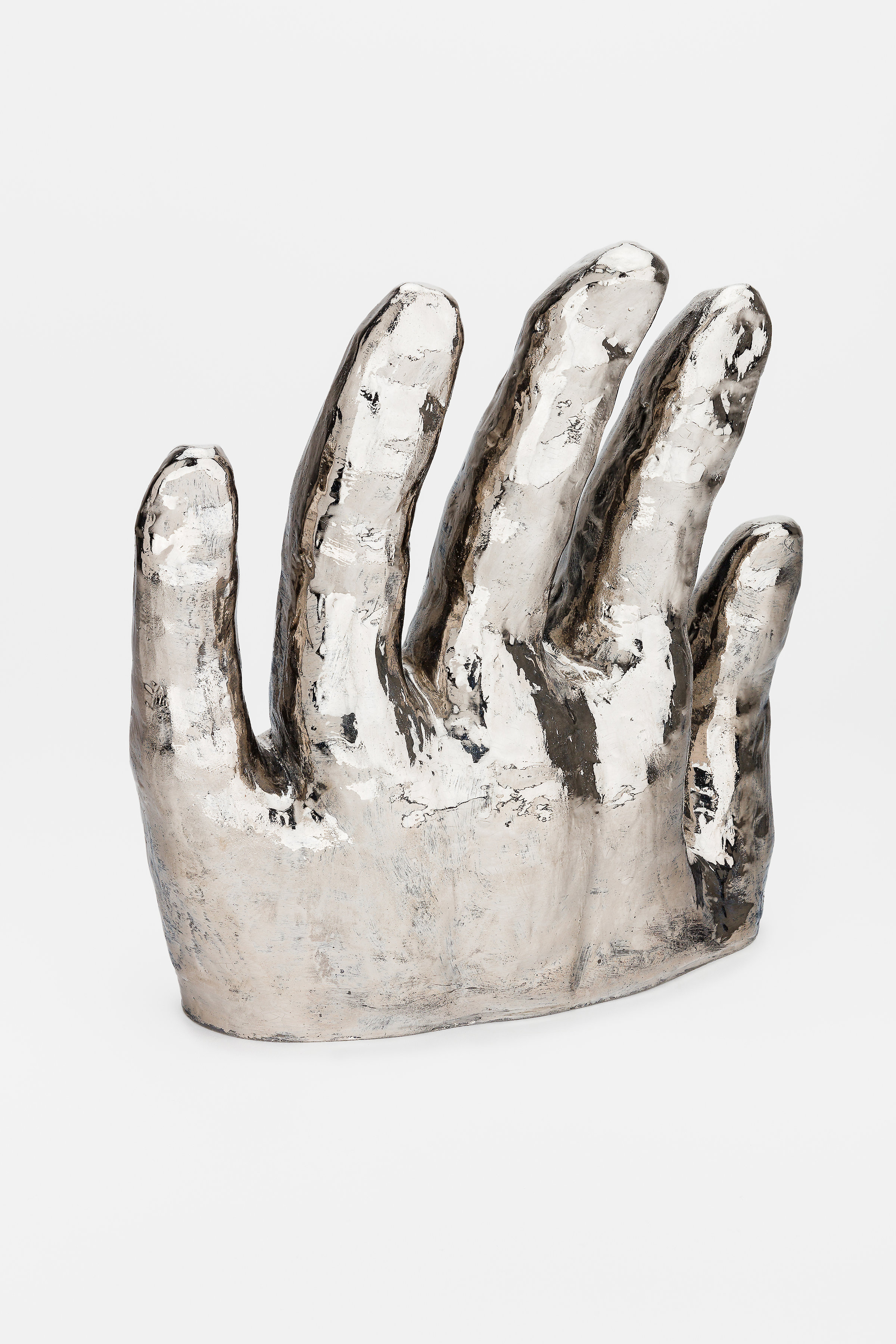
Body Liking It, 2020
Clay, black pigment, transparent glaze, platinum luster
28.5 × 27 × 11.5 cm
Courtesy Gianni Manhattan, Vienna
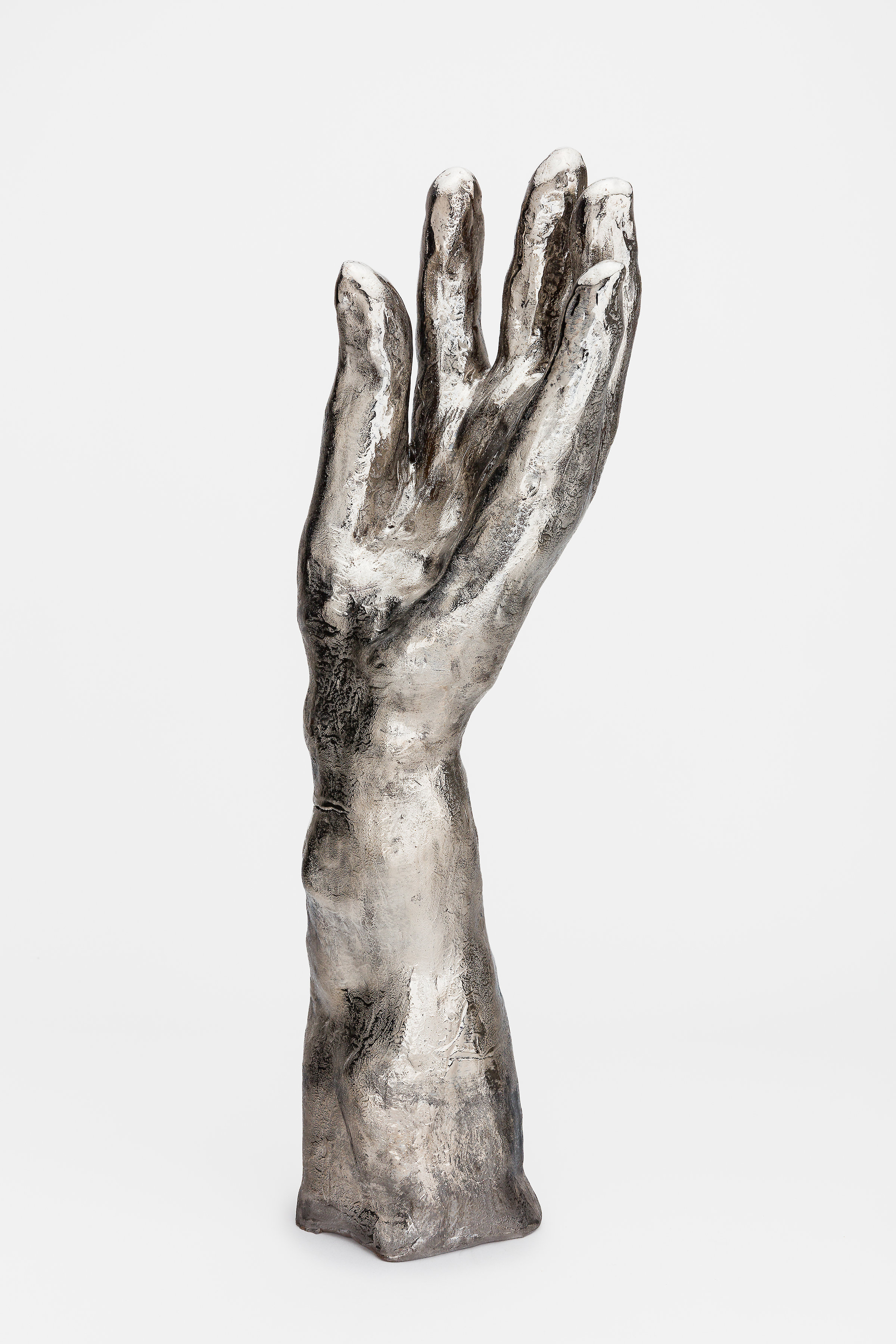
Damp Being, 2020
Brown clay, transparent glaze, platinum luster
45 × 13.5 × 10.5 cm
Courtesy Gianni Manhattan, Vienna
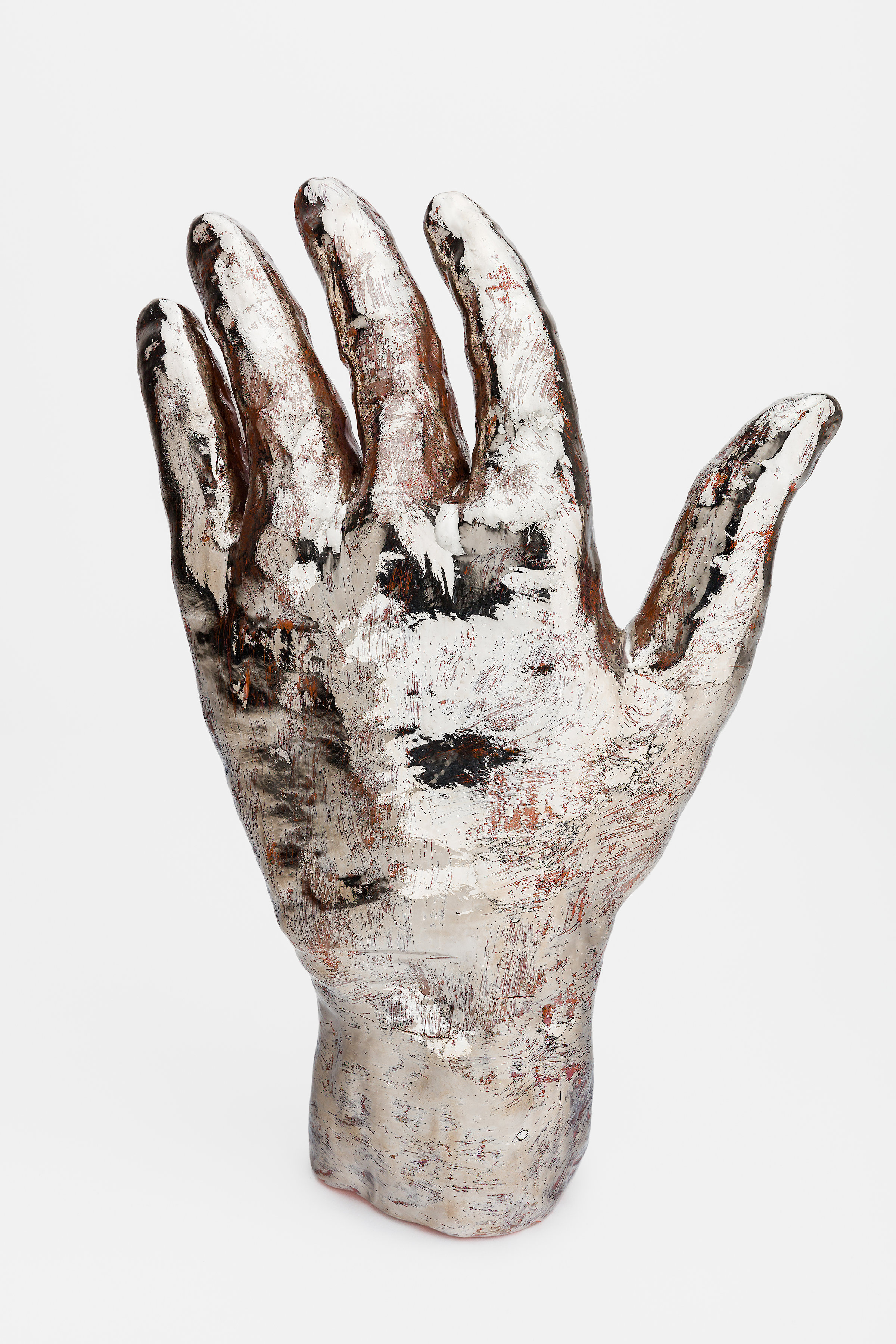
Leaking Body, 2020
Red clay, transparent glaze, platinum luster
34 × 22.5 × 10.5 cm
Courtesy Gianni Manhattan, Vienna
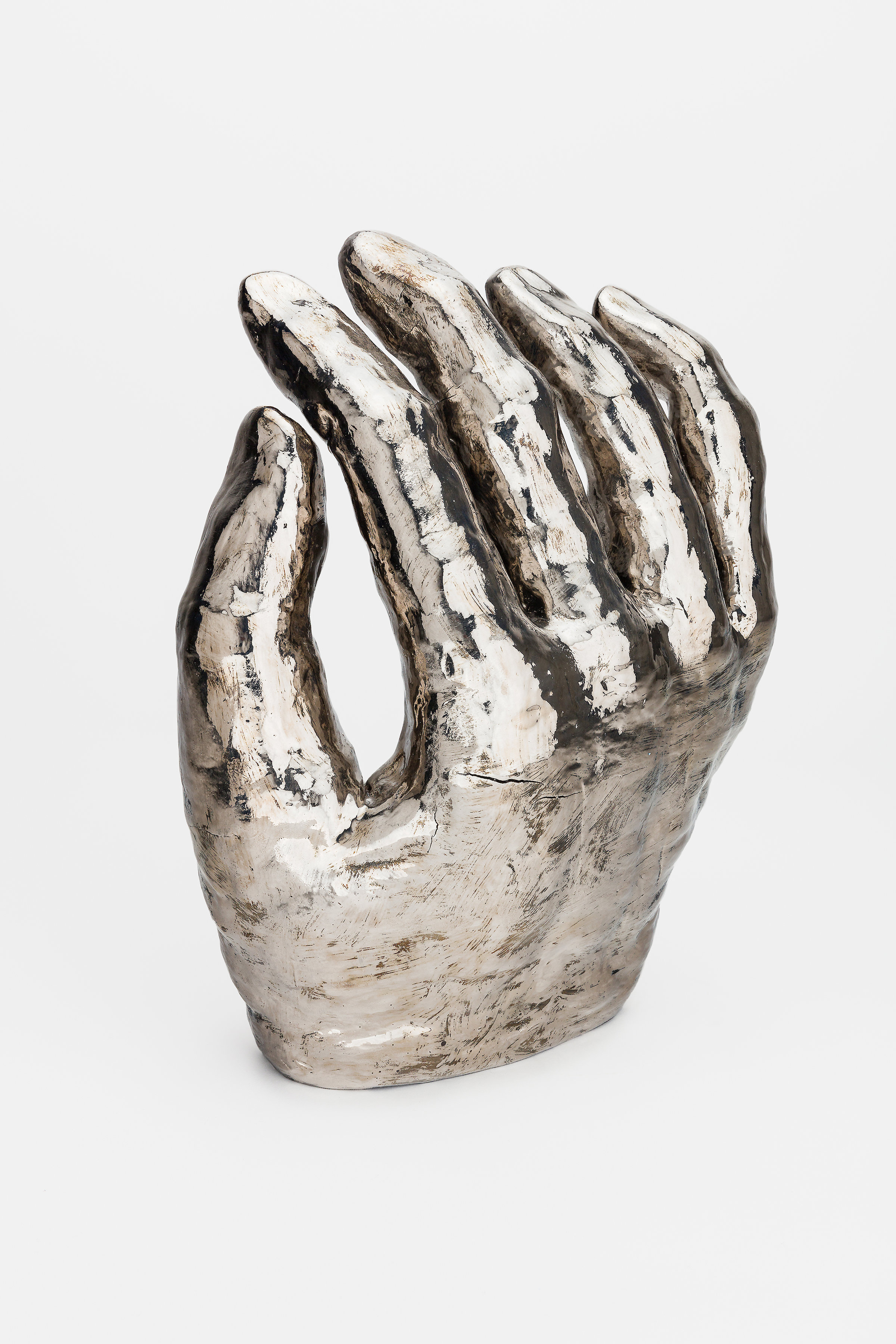
Open Body, 2020
Porcelain, black pigment, transparent glaze, platinum luster
29 × 22 × 14.5 cm
Courtesy Gianni Manhattan, Vienna
We see several sculptural fragments of bodies — hands and arms that recall the originality of language that had been formed by gestures.
Although the objects depict fragments of bodies, the elements do not seem isolated but rather exist only in their relationship to one another and seem to be waiting or reaching for something. These body parts have titles such as Leaking Body, Open Body, or Anxiously Leaking and inscribe their bodies into the relationship of opening up and liquefication.
On the one hand, the sculptural parts are only slightly demarcated from their spatial situation, above all because they have no pedestal and transition directly into the floor and do not create a hierarchy between space and object, but the metal alloys that lend the works a futuristic aesthetic clearly distinguish themselves from their surroundings. On the other hand, they are demarked by the closing off of human surfaces that make one thing of futuristic metal alloys and contrast with the fragility and indecisiveness of the body fragments.
The focus of Kapusta’s interest is on the skin in its function as membrane, as a zone of permeability. The membrane permits exchange between the bodies and their environment, which promises community on the basis of shared experiences but also poses a risk of contamination.
Kapusta thus reflects on the permeability of this skinlike boundary from the perspective of a collective body. It is about the common experiences we share. She relates the risks of this permeability to such boundary-crossing phenomena as capitalist flows of goods and the ecological crises caused by human beings. Kapusta’s works are coupled with questions such as how taking permeability and damage into account in the social context can also contribute to finding new forms of shared ethical action.
Barbara Kapusta
uses as a central, recurring element in her practice the connection of the body with materiality and language.
Her objects, films, performances, and text-based works have been shown most recently at Gianni Manhattan, Vienna; ACF London, London; Kunstraum London, London; Kunsthalle Wien, Vienna; Vis Hamburg, Hamburg; Ashley Berlin, Berlin; KUP, Athens; 21er Haus Vienna, Vienna; Beautiful Gallery, Chicago; and the mumok cinema, Vienna, among others.
Her most recent publication, Dangerous Bodies, is forthcoming in 2019 from Gianni Manhattan Vienna and Motto Books, Lausanne, Berlin.